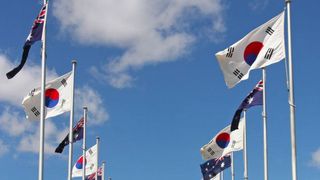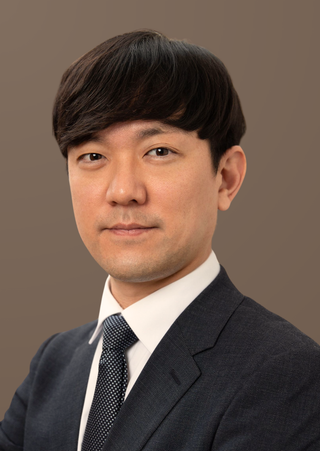In recent years, scholars have debated the apparent lack of diplomatic leadership by “middle powers” like Australia and South Korea on the international stage. Such pessimism should be reconsidered, however, in light of new administrations in both Canberra and Seoul. It is worth assessing if and how two of the Indo-Pacific’s most prominent middle powers might once again pursue creative and ambitious statecraft.
Early indications hint at opportunities that the governments of Australian Prime Minister Anthony Albanese and Korean President Yoon Suk Yeol could capitalize on to rethink their respective countries’ alignment toward the great powers, strengthen their roles in regional arrangements and institutions, and renew their global activism.
Stronger support for the US?
Like several of their regional counterparts, Australia and South Korea have faced difficulties in trying to navigate their security alliances with the United States and economic interdependence with China. Both countries could leverage the opening afforded by their new leaderships to reset or reinforce their relations with the great powers.
President Joe Biden’s May trip to Seoul set some high expectations for the kind of role Washington wants South Korea to play going forward. The United States is looking for a more proactive South Korea that will contribute its economic, military, and technological edge to a regional balancing agenda vis-à-vis China.
U.S. President Joe Biden’s May trip to Seoul set some high expectations for the kind of role Washington wants South Korea to play going forward. The United States is looking for a more proactive South Korea that will contribute its economic, military, and technological edge to a regional balancing agenda vis-à-vis China. However, although Seoul is expected to rethink its “strategic ambiguity” and align more closely with the U.S. under Yoon, the new administration has so far been cautious about expanding the alliance’s mission to also deal with China.
Meanwhile, Albanese has promised to stay the course in terms of Australia’s close alliance with the United States. Policy continuity is expected on most issues of Australia-U.S. relations, such as the Enhanced Force Posture Initiatives, deeper technological cooperation, and implementing the AUKUS partnership. The new Labor government has also been at pains to emphasize that it will not offer any concessions but will partake in “much less … chest beating” in its relations with China.
It would therefore be easy to assume that Australia and South Korea will simply continue to follow the general contours of their respective strategies toward the great powers. However, potential strategic surprises could very quickly trigger new alignment postures by Albanese and Yoon. For Australia, if a re-elected Donald Trump presidency abandoned the AUKUS partnership, it would force a profound re-evaluation of Australia’s current strategic policy choices. For South Korea, a new dispute with China could compel Yoon’s hand to take a hard line in light of his criticism of the previous administration’s handling of the 2016-17 THAAD crisis.
Enhanced role in regional arrangements and institutions?
The rise of groupings like the Quad and AUKUS, as well as Chinese-led economic initiatives and various ASEAN-plus arrangements, have made for a more crowded regional institutional landscape. As middle powers that are individually unable to influence decision making but could collectively have a significant impact, both Canberra and Seoul will no doubt pursue greater engagement in the various platforms that would amplify their voices and roles in the region.
In contrast to the previous South Korean government’s ambivalence towards exclusive U.S.-led arrangements, Yoon has doubled down on the importance of cooperating with like-minded partners and plans to release its own Indo-Pacific Strategy. Seoul may not be set to formally join the Quad, but the door remains open to its participation in some of its working groups. The Yoon administration’s keenness to mend bilateral relations with Tokyo also suggests that there could be more instances of groupings involving the two countries in support of a free and open Indo-Pacific.
The Albanese government has been quick to reaffirm its support for the Quad, with the prime minister visiting Tokyo for the Quad summit only days after the federal election and before he had even finalized his ministry. Australia is scheduled to host the next Quad Summit in 2023, accompanied by the emergence of an “ambitious and diverse” Quad agenda that boasts a range of initiatives. Beyond the Quad, Australia will arguably continue to prize its participation in the various trilateral groupings, such as with India and France as well as with Japan and the U.S., in realizing its preferred regional order.
Australia and South Korea certainly share many similarities in their foreign policy outlooks and approaches. Their new governments, nevertheless, will have to overcome several challenges in efforts to reset their middle-power ambitions.
Alongside their interest in smaller groupings, Australia and South Korea are also expected to recalibrate their engagement with ASEAN. On the heels of the ASEAN-Australia Comprehensive Strategic Partnership established in 2021, Labor has announced several initiatives focused on Southeast Asia, including an extra A$470 million in aid and development assistance and the appointment of an ASEAN Special Envoy. Meanwhile, the new South Korean government has indicated a potential modification of its predecessor’s New Southern Policy to include “a strengthened strategy aspect,” perhaps beefing up its niche in defense industry cooperation with selected Southeast Asian partners.
Australia and South Korea can still influence the shape of the region’s minilateral and multilateral groupings. Australia has been at pains to emphasize the Quad’s positive contributions to regional public goods rather than just being a platform for containing China, and South Korea’s engagement on specific Quad initiatives will reinforce the grouping’s openness. Australia and South Korea’s deepening defense cooperation with Southeast Asia, particularly in capacity building, similarly highlights the important value that middle powers can bring as equal partners with Southeast Asia beyond a China-U.S. binary.
Renewal of global activism?
Australia and South Korea will also have a chance to renew their global diplomatic activism in light of challenges such as climate change, pandemic recovery, and emerging technologies. From the United Nations to major international treaties, persistent effort and coalition building have been widely associated with the behavioral expectations of what it means to be a middle power. The invitations for Australia and South Korea to participate in the 2021 G-7 Summit and 2022 NATO Summit certainly reflect the expectations regarding middle-power contributions to global agendas.
Against this backdrop, Yoon has called South Korea a “global pivotal state” in an updated interpretation of former President Lee Myung-bak’s “global Korea” concept. This suggests that South Korea will engage in a concerted attempt to raise its international profile, which could also involve Seoul’s bid for a non-permanent seat on the U.N. Security Council for 2024–25, as well as hosting a future meeting of Biden’s Summit for Democracy.
While Australia has steadily narrowed its global vision and ambitions to its immediate region, the new government’s focus on climate change will be an opportunity to renew a global level of engagement. After all, current Foreign Minister Penny Wong and others were actively involved in the Copenhagen climate talks over a decade ago under the previous Kevin Rudd government. Moreover, Australia’s enormous potential in areas like hydrogen, solar, and wind can be aligned with South Korea’s strong expertise in nuclear energy to speed up the world’s energy transition to a zero-emissions future.
Looking ahead
Australia and South Korea certainly share many similarities in their foreign policy outlooks and approaches. Their new governments, nevertheless, will have to overcome several challenges in efforts to reset their middle-power ambitions.
Chinese pressure on the Yoon administration will inevitably be a careful consideration as it gradually enmeshes itself in U.S.-led regional initiatives. Provocations from Pyongyang may also draw Seoul’s attention away from the broader Indo-Pacific and back to the Korean Peninsula, while domestic sentiments in South Korea may complicate the government’s efforts to repair ties with Japan.
Likewise, Australia’s policy frameworks and the strong bipartisanship around them will make it harder to suddenly overturn existing trends. With the Quad and AUKUS having absorbed much of Australia’s limited policy bandwidth, for example, Labor’s promise to invest more in Southeast Asia and the South Pacific will require delicate adjustments to an already overstretched public service. Ambitious global diplomacy on climate change will also need sustained high-level commitment but the past decade of domestic political feuds over climate policy does not bode well for Australian leadership on this issue.
Such gaps between ambition and reality will not be easy to navigate, but both middle powers under their new leaderships should effectively leverage the rapidly shifting geopolitical dynamics to make a positive contribution toward regional and global stability. There remains a need for middle powers to consider fresh policy ideas and undertake concerted advocacy if, in the words of former Australian foreign minister and leading advocate of the middle power concept Gareth Evans, “the world around them is to be safer, saner, more just and more prosperous.”






